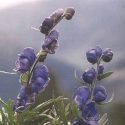 ACONITE
ACONITE
One of the most important features of this remedy is the sudden appearance of symptoms. Aconite is the main remedy for the first stage of any acute infection. Also a major remedy for shock after an accident or injury and great fearfulness.
ACONITE KEYNOTES
Inflammatory/acute conditions that appear suddenly – and in the early or immediate stage of any inflammatory condition. Conditions often arise after exposure to cold dry winds. Shock after accident or injury. Great fear. Relestlesness. Anxiety. Fever. Haemorrhage of bright red blood. Red, inflamed eyes. All conditions, generally speaking at onset or the early stages. Anxiety and restlessness. Azoturia (tying up) early stages. Balanitis. Bleeding, bright red blood. Colds (Rhinitis). Conjunctivitis/ Blepharitis with redness, swollen lids and sensitivity to light. Coughs: sudden onset, often after exposure to cold dry winds. Dry, irritating cough. Cystitis. Diarrhoea (early onset). Ear infections. Cases of fever, especially if the animal is restless and thirsty. Equine influenza. Fright and its consequences, eg: diarrhoea. Heat stroke. Influenza. New inflammation of the gums. Gingivitis. Oversensitivity to noise or touch. Shock. Sore throat
Worse: Cold, dry winds; evening and in warm areas. Better: In the open air.
 APIS
APIS
The main picture of this remedy is fluid-filled swelling, especially of the skin, mucous and serous membranes. It is also one of the main remedies for bites and stings with fluid-filled swelling.
APIS KEYNOTES
Fluid filled swellings and puffiness, which can be shiny and pit on pressure. Bites and stings. Blister-like swellings very sensitive to touch. Urticaria/Hives.
Allergic reactions including anaphylaxis after stings. Hives and urticarial swellings. Arthritis with painful swollen joints. Burns. Conjunctivitis/Blepharitis. Cellulitis. Cystitis. Horsefly bites. Gingivitis/Swollen gums. Insect bites and stings with fluid filled swelling. Mastitis. Orchitis. Swollen limbs.
Worse: Heat; touch. Better: Cold; cold bathing of affected area; motion
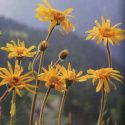 ARNICA
ARNICA
Accidents, injuries, trauma to soft tissue, tendons, ligaments and bones. Bleeding from trauma. Physical exhaustion. Shock. After Surgery to aid healing and recovery.
ARNICA KEYNOTES
Accident and injuries of any kind. After surgery. Physical exhaustion after strenuous activities. Shock.
The first choice of remedy for accidents and injuries and general first aid. Acute arthritis from trauma. Azoturia.
Bruises. Bleeding. Burns/Scalds. Blow or blunt trauma to the eye. Cellulitis. Dental treatment. Exhaustion from physical exertion. Fractures. Labour. Laminitis from trauma. Overreach injuries. Shock. Sprains and Strains. Swelling as a result of injury.
Worse: Touch; at rest; great exertion. Better: Lying down; gentle motion.
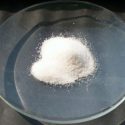 ARSENICUM ALBUM
ARSENICUM ALBUM
Arsenicum is an important remedy for diarrhoea, with or without vomiting, usually after eating spoiled or decomposing food. It also has a focus on the skin which can be dry and scurfy. Respiratory complaints. Anxiety and restlessness are usually noted indications for this remedy.
ARSENICUM KEYNOTES
Anxious, restless and nervy animals. Dry scaly skin. Sweet Itch. Chilly animals that feel the cold. Diarrhoea and vomiting. Burning discharges which excoriate the skin. Respiratory symptoms with wheezing.
Anxiety and restlessness; box walking in horses. Allergic skin reactions with dry,scaly, itchy skin. Appetite (loss of) with vomiting and diarrhoea. Colds (rhinitis) with burning watery discharge from eyes and nose which burns the skin. Cough with asthmatic, wheezy breathing. Diarrhoea from eating bad or rotten food. Eczema with dry, scaly itchy skin. Exhaustion after illness. Fear of being alone. Gastritis. Hayfever with mild headshaking and wheezy, dry cough. Influenza (early stages) with dry cough and burning, watery discharge from eyes and nose. Insomnia in older animals with restlessness. Poisoning with diarrhoea. Sweet itch with dry, scaly, very itchy skin. Vomiting often accompanied by diarrhoea after dietary indiscretion.
Worse: Cold; after midnight; being alone. Better: Heat and warmth; company
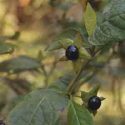 BELLADONNA
BELLADONNA
Complaints of sudden or violent onset and infections with inflammation and redness. This is one of the main remedies for fever.
BELLADONNA KEYNOTES
Fever and congestion. Red, hot inflamed skin. Dilated pupils. Throbbing, rapid pulse and sweating with many acute conditions. Pains are violent and throbbing. Convulsions and twitching. Aggressive or violent behaviour. Heatstroke.
Abscesses. Aggression with biting or striking out. Azoturia. Bad breath if gums are swollen, red and hot with discomfort. Bites – poisonous and otherwise with congestion/swellings etc. Colds (rhinitis). Convulsions. Conditions of acute onset involving congestion eg: Cystitis. Ear infections. Fever and congestion. Gums/Gingivitis. Heatstroke. Hysteria. Influenza. Laminitis with high respiratory rate and sweating. Mastitis. Sore throat. Vaccination.
Worse: Touch; movement; noise. Better: Resting; warmth
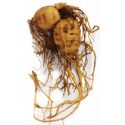 BRYONIA
BRYONIA
A remedy for acute ailments that develop slowly. There is dryness of mucous and synovial membranes, making coughing or movement painful. Great thirst can accompany complaints. Generally grumpy behaviour.
BRYONIA KEYNOTES
Dryness of mucous and synovial membranes. Dry cough worse movement or exercise. Hard, dry stools. Arthritis worse for any movement and animals will tend to lie on the painful side.
Arthritis, worse any movement. Azoturia. Colds (Rhinitis). Colic. Constipation with hard dry stools. Cough, dry, worse movement. Fractures with great pain. Influenza. Mastitis with hard glands.
Worse: Movement; exercise. Better: Resting; lying on painful side
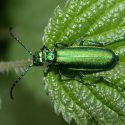 CANTHARIS
CANTHARIS
One of the main remedies for cystitis and urinary tract infections where there are frequent attempts to urinate and there may be blood in the urine. Pains are burning and stinging and may make the animal restless, cry out or bark.
Also a good remedy for burns and scalds including sunburn.
CANTHARIS KEYNOTES
Acute and severe inflammation of the urinary tract. Frequent urging to urinate. Frequent urination with blood and mucus in the urine. Burns/Scalds. Sunburn.
Cystitis with frequent urging to urinate. Burns/Scalds. Sunburn.
Worse: Touch; urinating; drinking water. Better: Warmth; gentle rubbing.
 COCCULUS
COCCULUS
The main remedy for travel or motion sickness. The animal may drool or be unable to open its mouth and there
may be vomiting in some cases.
COCCULUS KEYNOTES
Travel sickness
Worse: Prolonged movement; travelling in the car.
Cocculus can be alternated with one of the remedies for anxiety or fear e.g.: Acon/Ars/Arg-n or with Ipecac if there is excessive salivation or vomiting.
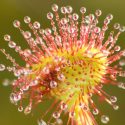 DROSERA
DROSERA
Principally used for coughs. Hacking, deep, spasmodic, barking or hollow-sounding coughs which may also cause the animal to retch, gag or vomit. The main remedy for Kennel Cough.
DROSERA KEYNOTES
Hacking dry cough of short duration. Deep, spasmodic cough which ends with animal retching, gagging or vomiting. Spasmodic coughs that cause nosebleeds. Symptoms usually confined to the upper respiratory tract.
Kennel cough. Hacking dry coughs of short duration. Deep, spasmodic, irritable cough with or without retching. Coughs that cause the nose to bleed.
Worse: Lying down; from barking. Better: Fresh air; gentle movement.
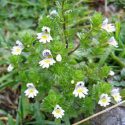 EUPHRASIA
EUPHRASIA
Commonly known as Eyebright, its main use is in the treatment of eye complaints.
EUPHRASIA KEYNOTES
Inflammation of the conjunctival membranes. Eyes red and lids swollen. Profuse tear production (lachrymation). Acrid tear production. Eyes water constantly. Catarrhal problems of the eyes. Thick discharge which inflames the skin. Photophobia (light sensitivity). Bland nasal discharge.
Blepharitis, eyes red and sore, with tear production and possible light sensitivity. Colds where there is an acrid discharge from the eyes and bland nasal discharge. Conjunctivitis, eyes red and lids swollen. Eye inflammation from fly worry. Hayfever. Sticky discharge from the eyes, lids swollen and red. Watering eyes. Worse: Light; warmth. Better: In the dark
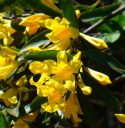 GELSEMIUM
GELSEMIUM
Has an affinity for the nervous system; for example an animal can tremble or become rigid or “paralysed” with fear, anxiety or anticipation. In older animals weakness or trembling of the back legs, worse after exertion. Gelsemium is also one of the main remedies to think of in colds or influenza which develop slowly and where the animal is weak, dull or apathetic, with shivering.
GELSEMIUM KEYNOTES
Anxiety, anticipation or great fear. Colds or Influenza with dullness, apathy or shivering. Trembling from fear. Weakness and trembling in hind limbs of older animals.
Anxiety or anticipation where the animal trembles or is rigid and unable to move from fear. Colds which come on slowly; animal is dull and lethargic and may have a tickly cough. Diarrhoea or excessive urination from anxiety, anticipation or fear. Diarrhoea from over- excitement. Equine Influenza. Fear of loud noises or thunder with trembling. Fever of slow onset with weakness and shivering. Heat stroke where initial symptoms have abated but animal still dull and confused. Hiccough in nervous animals. Influenza with shivering:
Worse: Exercise; before a thunderstorm; damp weather; excitement or fear. Better: Open air; sweating; urinating
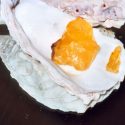 HEPAR SULPH
HEPAR SULPH
One of the main remedies for inflamed, painful, infected wounds. There is a tendency to form pus. Hyper-sensitivity to everything is one of the main characteristics: pain, touch, cold, noise.
HEPAR SULPH KEYNOTES
Abscesses with inflammation that are very painful when touched. To help prevent suppuration from an animal bite or puncture wound.
Abscesses of any kind if painful, inflamed or discharging pus. Anal gland inflammation/abscess. Animal bites. Cellulitis with pus like discharge. Colds (Rhinitis) with purulent discharge and animal sensitive to cold draughts. Cough with rattling and choking. Ear infections. Eczema which becomes infected after scratching. Gum inflammation with great pain. Foot abscess with severe lameness. Mud fever. Skin conditions that become infected. Sweet Itch. Vaccination with threatened abscess. Worse: Touch; cold; drafts. Better: Warmth
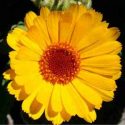 HYPERICUM/CALENDULA
HYPERICUM/CALENDULA
Hypericum and Calendula are traditionally known as the great homeopathic antiseptics and healers. This combination should be given for any injury where the skin has been broken, and routinely to help with
healing after
surgery.
HYPERICUM/CALENDULA KEYNOTES
It is also an excellent remedy for injuries to nerves and can be used alongside Arnica for crush injuries or in any injury where the nerves are affected. It can be alternated with Hepar Sulph or Ledum for bites or puncture wounds.
Any injury where the skin has been broken. Abrasions. Abscesses which are fully drained to aid healing. Cuts. Puncture wounds. Lacerations. After surgery to aid healing. Injuries to nerve rich areas. Crush injuries where nerves have been damaged. Spinal injuries; injuries to the base of the tail, causing “Tail-drop” in cats.
Abrasions. Abscesses. Animal bites. Cuts. Dental treatment for sore, cut gums. Eye injuries. Grazes. Horsefly bites. Injuries to spine. Insect bites and stings. Labour to aid healing after caesarean or tears. Laminitis to help with pain. Overreach injuries. Puncture wounds. Surgery to help with healing. Vaccination to help with the needle puncture wound. Worse: Touch; cold or damp air
IGNATIA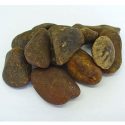
The number one remedy for grief or bereavement of any kind. Animals of nervous disposition/hysterical
IGNATIA KEYNOTES
Effects of grief or emotional shock.
Any kind of grief. Abandoned animals. Change of owner. Change of stables. Grief from stay in kennels or cattery. Convulsions from stress. Homesickness. Hysteria. Loss of offspring or companion. Pining and sadness. Weaning, to help mother with separation from offspring.
Worse: Morning; open air. Better: Warmth; while feeding.
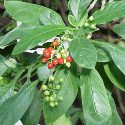 IPECACUAHNA
IPECACUAHNA
One of the main remedies for nausea and vomiting. Coughs with retching, choking and gagging. Haemorrhages.
IPECAC KEYNOTES
Nausea, retching and vomiting. Coughs with retching and vomiting. Haemorrhages of bright red blood. Travel Sickness.
Coughs which end in retching, gagging or vomiting. Haemorrhages of bright red blood which gushes. Kennel cough. Poisoning with retching and vomiting. Nausea with or without vomiting; animal drools excessive saliva. Travel sickness. Vomiting with much salivation; slimy vomit.
Worse: Moving around; touch. Better: Open air; rest
 LEDUM
LEDUM
Ledum is an important remedy for puncture wounds of any kind. It has purported anti-tetanus properties; therefore use alongside Hyp/Cal for any cuts or lacerations. It is also for blunt trauma to the eye and arthritic complaints of the fetlock, pastern, hock and coffin joints in horses.
LEDUM KEYNOTES
An important remedy for puncture wounds and nail prick. Arthritic symptoms. Insect bites. Bruised sole. Eye injuries. Symptoms are better for cold applications.
Arthritis especially of the fetlock, pastern, hock and coffin joints where there is cracking in the joints. Bites from other animals. Eye injuries where eye is bloodshot, bruised or contused. Bruised sole in horses. Cuts: alternate with Hyp/Cal for its anti-tetanus properties. Insect bites and stings. Overreach injuries. Puncture wounds of any kind: from thorns, nails, needles, insect bites etc. Sweet itch as a preventative. Vaccination: to ease swelling at site of injection.
Worse: Heat; at night; stable; movement. Better: Cold weather; cold applications or hosing.
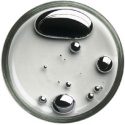 MERCURIUS CORROSIVUS
MERCURIUS CORROSIVUS
The main indication for first aid use in animals is slimy or bloody diarrhoea. Also urinary tract infections. Colds. Ear infections. Inflammation of the gums.
MERC CORR KEYNOTES
Diarrhoea. Cystitis. Conjunctivitis. Ear infections. Inflammation of the gums with excess saliva. Mouth ulcers.
Balanitis. Cystitis with very painful, frequent attempts/straining to urinate. Colds with greenish discharge containing flecks of blood. Conjunctivitis with excoriated lids and greenish discharge. Diarrhoea with foul, slimy stools. Dysenteric diarrhoea with bloody stools and mucus. Ear ulcerated and inflamed with dark-coloured discharge. Gums spongy and bleeding with lots of saliva. Mouth ulcers. Ulcers in the eye following injury.
Worse: At night. Better: Resting
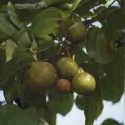 NUX VOMICA
NUX VOMICA
Digestive disturbances and congestions are associated with this remedy, especially after overeating unsuitable foods.
There is abdominal discomfort and flatulence. Stools are usually hard but diarrhoea can follow overeating. Symptoms are relieved by vomiting.
NUX VOMICA KEYNOTES
It is one of homeopathy’s great ‘clearing’ remedies and is often used to help clear the system of toxins, especially after a course of medication and can be alternated with Sulphur for this purpose. It is also a remedy for aggression, irritability and impatience.
Digestive disturbance especially after overeating or eating unsuitable foods. Abdominal discomfort; flatulence. Constipation with hard faeces. Diarrhoea after overeating. Laminitis brought on by overeating and toxicity of the system. Irritability and sensitivity, especially to noise. Clearing toxicity and supporting the liver after over-medication or poisoning.
Aggressive behaviour. Appetite lost after mild digestive upsets. Bad breath after vomiting, diarrhoea or constipation.
Colic-spasmodic or impacted from over-indulgence or eating bad food. Constipation with frequent straining or after digestive upset with loss of appetite. Dry cough with irritable nature; animal is hypersensitive or irritable. Diarrhoea, usually slimy from over-indulgence. Flatulence from eating unsuitable food. Hair ball: to help pass it. Hiccough.
Laminitis from dietary problems or toxaemia. Poisoning – useful clearing and liver suppor remedy. Surgery (after) to help clear the anaesthetic.
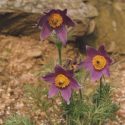 PULSATILLA
PULSATILLA
Animals needing Pulsatilla are sweet, affectionate and friendly or shy, timid types; it is one of homeopathy’s great female remedies. Disorders of female hormones respond well when the type fits. Discharges whether from the ears, eyes, nose, vulva etc are creamy or greeny/yellow colour. Changeable is often a word to describe Pulsatilla symptoms, which come and go eg: appetite, diarrhoea, eye symptoms.
PULSATILLA KEYNOTES
Sweet, affectionate and friendly types or shy and timid. Bland creamy/yellow/green discharges from the ears, eyes, nose, vulva etc. Changeable symptoms. Symptoms are better in the fresh air. Animal is usually thirstless.
Anticipatory anxiety especially about being left alone. Appetite variable or changeable. Balanitis with creamy yellow discharge. Colds (Rhinitis). Conjunctivitis with bland discharge, eyelids can be stuck together in the mornings. Coughs worse morning. Cystitis. Ear infections worse lying down. Fear of being abandoned. Influenza. Pregnancy (False).
Pyometra. Retained placenta. Timidity.
Worse: Heat; over rugging of horses; in the evening. Better: Open air; gentle movement.
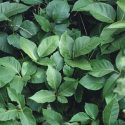 RHUS TOX/RUTA
RHUS TOX/RUTA
This combination of Rhus Tox and Ruta Grav is primarily used for muscular skeletal problems, tendon, ligament and bone injuries.
It is a powerful remedy for Arthritic/Rheumatic complaints, especially indicated where symptoms are worse 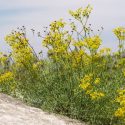 after rest and improve on gentle movement and warmth. It also has an affinity for the skin with burning itchy, red eruptions.
after rest and improve on gentle movement and warmth. It also has an affinity for the skin with burning itchy, red eruptions.
RHUS/RUTA KEYNOTES
Arthritic/Rheumatic complaints. Back problems. Muscular strains. Sprains/strains of tendons and ligaments. Bruising to bone. Sore shins. Splints.
Arthritic and Rheumatic complaints where the animal is stiff on first movement, especially after rest or getting up out of bed. Azoturia, in mild cases where muscle stiffness is relieved by gentle movement. Back problems. Bruising to bone. Cellulitis. Dislocations. Muscular stiffness and soreness after over-exertion. Muscular trembling from over exertion. Sore shins from concussion. Splints. Sprains and strains of muscles, tendons and ligaments (use in conjunction with Arnica)
Worse: Cold, damp weather; on first movement; from over-exertion Better: Warmth; gentle movement; massage or gentle rubbing.
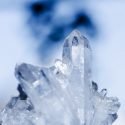 SILICA
SILICA
Silica is found in connective tissue and other tissues that comprise the building blocks of the body such as bone, cartilage, tendons, ligaments, skin, hair, nails and hooves. It is the number one remedy for helping to expel foreign bodies such as grass seeds, thorns and splinters. Silica animals may have little stamina, be weak, malnourished and sickly looking. They are often very timid and lack “grit” both in the physical and emotional sphere. Wounds may be slow to heal and may become chronic.
SILICA KEYNOTES
Abscesses that are slow to heal. To help expel foreign bodies such as splinters, thorns, grass seeds. Cracked, brittle hooves.
Weak physical appearance/recurrent illness. Wounds that are slow to heal. To help prevent scar tissue or dissolve scar tissue. Shy timid animals who lack “grit.
Abscesses caused by a foreign body such as a grass seed, splinter or thorn. Chronic or persistent abscesses. Cracked or brittle hooves.
Chronic ligament injuries or sprains. Scar-tissue prevention. Shy, timid animals who lack confidence or “grit”. Slow healing of wounds or infected wounds where there is little pain. Thrush of the hoof. Worse: Cold weather; dampness. Better: Warmth; the summer; rest
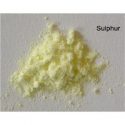 SULPHUR
SULPHUR
One of homeopathy’s main remedies for a wide range of skin/coat complaints. The skin/coat appears dirty, greasy or scurfy and the animal often smells offensive. Eruptions may be dry, red, hot and itchy or there may be wet, vesicular or crusty eruptions and the animal may be seen to scratch frequently until the skin bleeds. Skin conditions are aggravated by becoming hot or being bathed. Sulphur is also a good remedy for clearing the system from overmedicating or poisoning and may be alternated with Nux Vom. Also acts on the digestive system.
SULPHUR KEYNOTES
Red, hot, itchy skin/coat. Wet or crusty eruptions. Skin or coat appears dirty or greasy and animal may smell offensive. Skin symptoms aggravated by heat or bathing and animal seeks cool places.
Allergy with red, hot, itchy skin. Constipation with red anus; stool large and painful; other skin conditions may be present. Dandruff/Scurf with hot, itchy skin. Diarrhoea with bright yellow to orange stools which smell like rotten eggs, worse early morning. Ear infections with red, hot and itchy ear flap. Eczema with hot, red and itchy skin or wet and crusty lesions. Fleas – allergic reaction to bites. Mange. Poisoning, or over-medicated animals, to help clear the system. Sweet itch with dirty-looking coat, worse for heat. Thrush of the foot.
Worse: Heat; being bathed; cold damp weather. Better: Dry weather if not too hot; motion; eating.
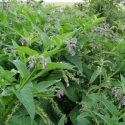 SYMPHYTUM
SYMPHYTUM
The number one remedy to encourage the healing of fractures or broken bones, but should only be given once the bone has been set. Assists in fractures that are slow or difficult to heal. A remedy for deep bruising to bone. This remedy also acts generally on the joints and helps aid the healing of tendons. Eye injuries, especially from blows or blunt trauma to the eye. If you run out of Arnica, Symphytum can help all manner of injuries, including gunshot wounds.
SYMPHYTUM KEYNOTES
To assist the healing of fractures/broken bones once they have been set. Injuries to the stifle. Injuries to tendons. Injuries that have caused penetration to the bone. Injuries to joints. Eye injuries from blunt trauma.
Broken bones/Fractures once they have been set. Bruising to bone. Eye injuries from a blow or blunt trauma.
Injuries to tendons. Splints. Sore shins.
